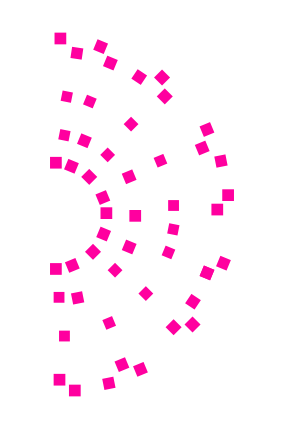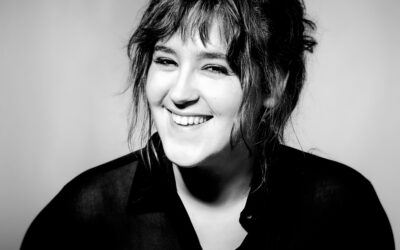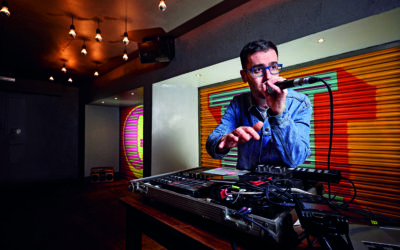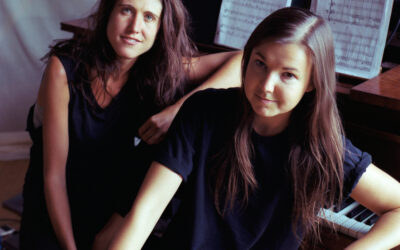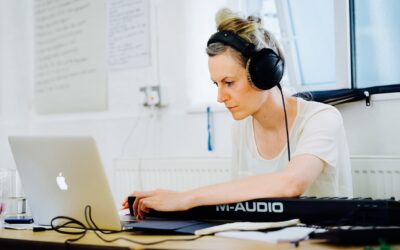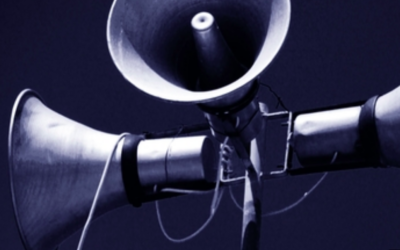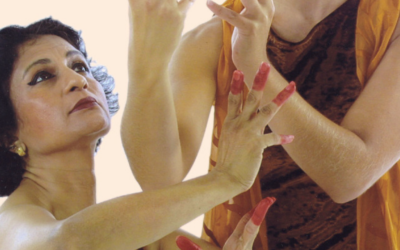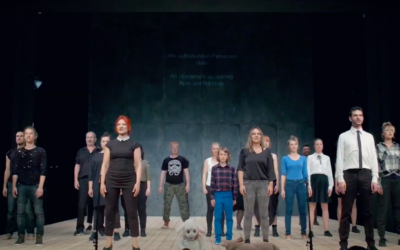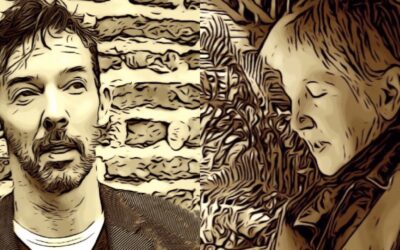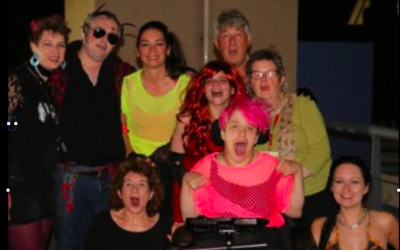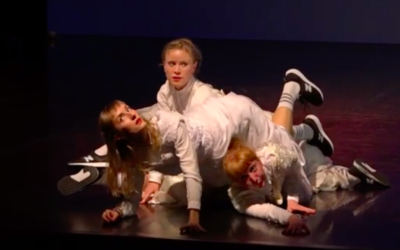#3 Amplified Storytelling
Emerging from LMYE #2: Post-Verbatim and growing further in scope and significance is the theme of technology. Specifically, microphones, loop pedals, editing software and headphones are highlighted as instruments that facilitate new dramaturgical potential. These innovations can be seen to have been embraced by theatre-makers as simply a part of a historical continuum of technological developments that might have served to enhance the art of storytelling ever since the addition of lyre accompaniment to Homeric verse performance.
This issue collates together a number of artistic and intellectual trajectories towards amplified storytelling including those artists who arrive at it from an interest in music and pop culture more broadly (Kieran Hurley, SK Shlomo), sound and spatial design (Melanie Wilson, Eszter Kálmán, Ross Brown) and/or corporeality and embodiment of voice (ZU-UK, Quote Unquote, Gracefool Collective, Jane Boston and Matthew Mills).
Further nuance and augmentation to the topic of amplified storytelling is added by reflections on potential dramaturgical implications of the current moment encapsulated by the sounds of melting glaciers and Covid-diseased breath (Svich and de Senna) and, more significantly, by the ways in which voices of the marginalised can be amplified through verse (Kasia Lech), synaesthestetic sensibility (Kochhar-Lindgren) and the urgent need for greater economic access to technology itself (The Unspoken Project).
Contrary to a heavily gendered history of sound, and the familiar stereotype of technological innovations being traditionally aimed at men as noted by Ross Brown (2020), we encounter here the phenomenon also diagnosed by Susan Bennett in her book Sound (2019) that 21st century innovations, specifically in relation to experiential sonic performances, are frequently forged by women and, we might add, those marginalised in other ways. With the aid of Luce Irigaray’s notion of ‘ethical listening’ and Gillian Siddall and Ellen Waterman’s idea of sound as a physical phenomenon that enables embodied listening, Bennett establishes that in its deterritorialised sense, sound cannot be thought of as a ‘discrete category in theatrical performance’, but as inherently multimodal and interactive (2019: 112).
The intersections at play in LMYE #3, therefore, highlight new meanings of ‘amplification’ in storytelling, theatre and performance, which promote the term’s accrued political, ethical and maybe even civilisational potential.
Works Cited
Bennett, Susan (2019) Theory for Theatre Studies: Sound, London: Bloomsbury Methuen.
Brown, Ross (2020) Sound Effect: The Theatre We Hear, London: Bloomsbury Methuen.
The Gallery
In Gallery #3, we explore the artistic trajectories and performance idioms of six artists who bring distinct legacies, interests and professionalities to their work with speech and sound. English artist Melanie Wilson’s multimodal practice includes writing, performing, directing, composing, sound design and opera, and Scottish playwright Kieran Hurley has rewritten his experimental rave solo show Beats into a feature film. Hungarian theatre-maker Eszter Kálmán arrived at sound-based performance via her interest in visuals, while Canadian duo Quote Unquote have been united in their exploration of voice by their long-term dedication to the training of Jacques Lecoq. London-based ZU-UK have fused together the training influences, embodied practices and cultural heritage of Iran, Yemen, Poland, Brazil, Japan and of London’s industrial music scene into a specific brand of post-immersive performance. Finally, Aural/Oral Dramaturgies Artist in Residence SK Shlomo shares how his Middle Eastern heritage has informed his own style of performance as a beatboxer, honed among stars of the music industry and finding its way to theatre.
Non-Verbal Narratives: An Interview with Eszter Kálmán
Storytelling as Sonic Conjuring: An Interview with Kieran Hurley
Slippages in Perception: An Interview with ZU-UK
To Unite in the Groove: An Interview with SK Shlomo
Learning by Ear, Painting by Voice: An Interview with Quote Unquote
Sound is a Plastic Art: An Interview with Melanie Wilson
The Library
Bookending this issue is Library #3. In it Ross Brown offers an invitation to semantically complicate the idea of effect vis à vis affect in Sound Effect: The Theatre We Hear while Kasia Lech’s The Dramaturgy of Form advocates for a re-engagement with the heteroglossic potential of verse to effect political change. Kanta Kochhar-Lindgren elaborates on her attempt to transcend the hearing/’deafness’ binary in her 2006 title Hearing Difference through her own multimodal, cross-sensorial, and multicultural approach which hereby acquires a renewed level of relevance.
The Salon
Salon #3 hosts two conversations which invite us to think about the ethics of amplification, and of hearing and being heard more generally, in relation to identities, dramaturgies and ecologies. Jane Boston and Matthew Mills approach the topic of voice and gender from the point of view of theatre and music, of politics and of the medical profession to affirm how crucial it is that in a community each and every member ‘sounds themselves’ and is able to listen to difference. The topic of sonically paying attention to difference also takes centre-stage in Pedro de Senna and Caridad Svich’s exchange on how sound dramaturgically fills the space between us as individuals and between us and our environment, from the micro-scale of the amplified sound of a Coronavirus patient’s lungs to the macro-clamour of a melting ice shelf.
The Laboratory
Amplification as an ethical imperative emerges also from our Laboratory #3. The Unspoken Project, a theatre company specialising in working with Augmented and Alternative Communication (AAC) users, lead us through the making of The Voice Monologues, a performance that starkly confronts us with the question of voice and voicelessness in our society, on and importantly also off stage. Our artists in residence Gracefool Collective detail how they went about disrupting both social and choreographic norms in their This is Not a Wedding, in which the female body allows itself to ridicule stifling traditions and the female voice is staged as that which interrupts.
